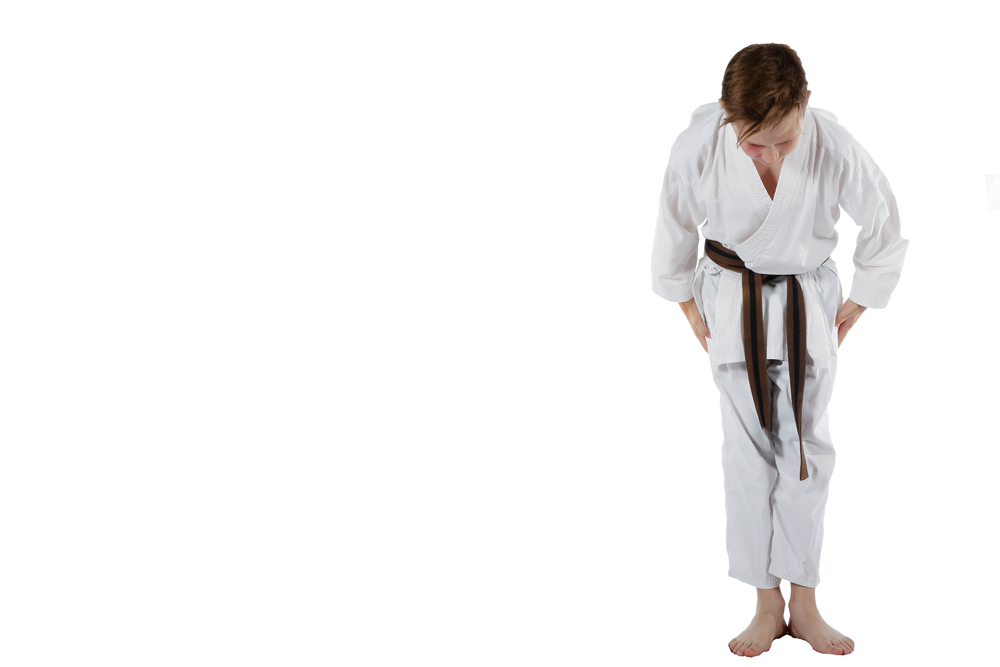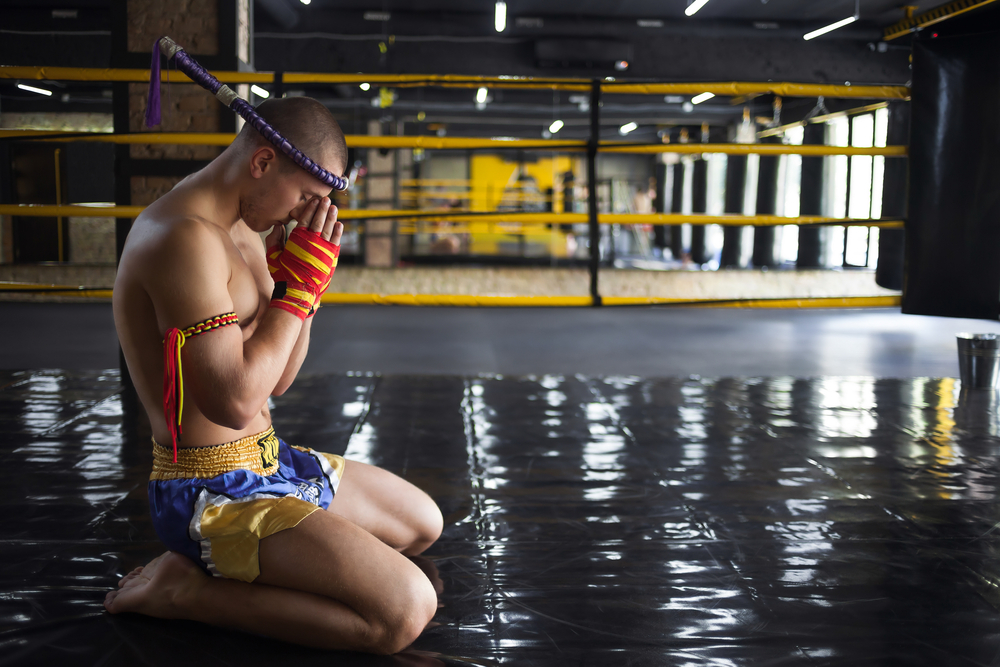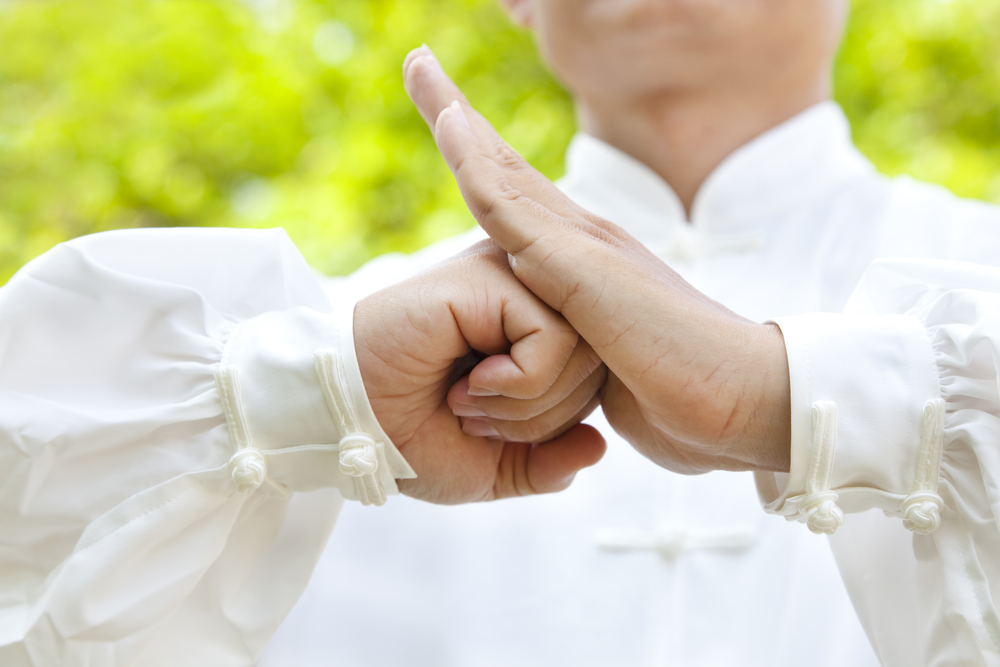Bowing in martial arts is a long practiced tradition to show respect and appreciation to your Teacher, fellow students and school or academy.
Bowing is also performed before competition against other schools or academies and also in training before performing partner drills or sparring.
Bowing in martial arts is most commonly recognized in popular culture from the Japanese samurai and Judo/Karate traditions of bowing out of respect.

In muay thai, the martial arts bow of respect is known as the wai. The wai is also done as a respectful way to greet others in everyday Thai culture as well.
Across different martial arts, bowing is performed differently, but most commonly bowing is performed:
- On entering your school, dojo or gym
- To your Teacher, Master and Senior students
- Before stepping on the mats or working the heavy bag
- To your training partner before drilling or sparring/clinching
- Before competing or fighting
- On exiting the mats/tatami
- Before leaving the school, dojo or academy
Different Ways of Bowing in Martial Arts
There are a wide variety of martial arts bows and salutes used today.
They all signify respect and humility and are almost always performed before and after each training session, fight or performance.
Each is unique to their own style.
A common factor is that the tradition of bowing in martial arts is most commonly seen in Asian cultures and not so much in the West or European fighting styles such as Savate, Boxing, and Wrestling.
Bowing in Japanese Styles
Japanese martial arts bows are probably the most recognized ways of bowing in the world today.
With the hands place down at the sides, a Karateka or Judoka lowers their head and bends forward at the waist. The feet are together usually with eels touching to ensure your hips squarely face the person you are bowing to.

The lower the bow the more respect that is conveyed through the act of bowing.
This is the same throughout Japanese culture in terms of depth of bow and respect conveyed.
In Japanese martial arts, the different types of bowing are known as:
- Bow: rei
- Salute/Bow: keirei
- Respectful bow: saikeirei
- Standing bow: ritsurei
- Seated bow: zairei
In training, before stepping on the mat or before performing partners drills it is expected that you before to respect the mats as well as your training partners.
Bowing in Muay Thai
In muay thai, the wai kru is performed before each fight as a way of showing respect and appreciation to your teacher, training partners and school.
The wai kru literally translates as respect to the teacher and is not limited to Thai martial arts but in all aspects of Thai culture where teachers in different fields are paid respect through bowing or the wai.
Through the wai kru both standing and kneeling bowing is performed.

In muay thai training, bowing is not as common as in Japanese martial arts.
The wai is done usually before clinch sparring as in Thai culture is is considered rude to touch another persons head so ‘forgiveness’ is expressed before clinching through the wai.
Thai fighters will also perform the wai to the heavy bag before training as a sign of respect to the bag as well.
Bowing in Chinese Martial Arts
In Chinese Kung Fu, the Kung Fu salute or bow is performed with an open left hand placed next to a closed right hand fist.
Chinese Kung Fu schools often require bowing to be performed before entering the school or ‘Kwoon’ as well as three bows to be performed in acknlwoedgement of i) Ancestors or PAst Masters ii) to Senior students and instructors iii) to trainng partners, other students and members of your shool.

There are many different styles of Chinese martial arts and as such here are different ways to greet, acknowledge, respect and bow to others from different styles.
The act of ‘bowing’ and saluting also allows a practitioner to show their own style through performing a unique salute or bow.
Bowing in Korean Styles
Bowing in Korean martial arts such as Taekwondo and Hapkido is performed in a similar way as in Japanese martial arts.
The traditional Korean commands for bowing are:
Bow: Kyong Ye
Bow to the Master: Sabum-Nim Kae Kyong Ye
Bow to the Instructor: Suhn-Bae Nim Kae Kyong Ye
Bow to the Flags: Kukiae Dae Hiyo Kyong Ye
A important part of bowing in Korean martial arts is lowering your eyes and looking at the floor or your teachers feet when you bow.
A verbal greeting such as ‘Good Morning Sir’ can also be voiced at the same time as bowing.
Similar also to Japanese martial arts traditions, in Korea bowing is performed before entering an dleaving the Dojan, to your teacher and seniors and fellow students and before partner work.
Also importantly in both Korean and Japanese martial arts, bowing is also performed to the national flag usually after training.
Bowing in Indonesian/Malay Fighting Styles
An umbrella term for martial arts originating from the Malay and Indonesian people is Silat.
Simlar to muay thai stlye of bowing and traditions of South East Asia, Silat also bows with hands placed together and arms in front. This is commonly a greeting or bow in the Hindu tradition – Namaste similar to the Wai in Thailand.
When performing the closed hands Namaste the head is also lowered in respect and as a sign of humility.

Many Silat schools also perform the Chinese tradition of open hand over fist salute due to their lineage.
In Silat, training sessions and performances begin with a bow and salute as a sign of respect to the Master, fellow students and the school.
Final Thoughts
The tradition of bowing is central to being a martial artist. As a sign of humilty it expresses an eagerness and determination to learn and go through hardship in order to learn and improve oneself.
Bowing is also a major sign of respect and acknowledgement of your Master and ancestors from which the lineage came as well as to all your training partners and instructors and the school itself.
As martial arts continues to modernize and develop, it is certain that the act of bowing will always be present in training and competing, well into the future.


